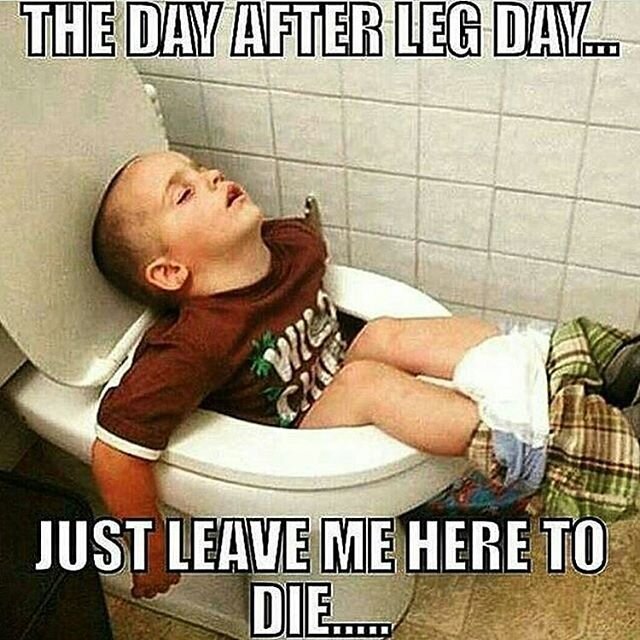I’m sure most of you can’t wait to get back to the gym!
FINALLY!
But are your bodies ready?
Our tissues - joints, ligaments, muscles and tendons - and our nervous system need time to adjust after taking so much time off. Even if you have been doing home WODs, it’s likely you have not been lifting as heavy or working out as intensely as you were 6 months ago. There are also many movements that you haven’t been able to do at home (pull-ups, barbell snatches, T2B, etc.).
This blog can be used as a guide to return safely back to the gym so that you can stay consistent, avoid injury and get back to doing all the things that you love. Even if you are already back to the gym I still want you to keep these things in mind as you continue on the come back train.
Don’t be that person that goes all out the first day and then can’t workout for the next 2 weeks because you are too sore or get hurt!
What would you do if your first WOD back was “FRAN”?
Programming “FRAN” may not be the first choice for gyms reopening but there are some gyms that have been open for a few months and are back to regular programming. But what if you are just coming back?
Would you skip that day and stay home, cry, fight through it, scale it, modify it, or preimptively schedule your next PT visit?
I would probably do this…
How you feel largely depends on what you’ve been doing the last 6 months. Many people have been working out at home with minimal or no equipment, some have not been working out at all and some have been living their best lives training more than ever with full home gyms. No matter what you’ve been up to - it’s perfectly okay BUT you do need to consider your activity the last few months when returning to the gym.
Think back to when you first started CrossFit. Personally, I had never done high intensity workouts, never held a barbell and never done any movements hanging from a pull-up bar. I had no clue what I was capable of. I was self-limiting and overall just not very fit or strong.
How I felt after my first “KAREN”
After you’ve done CrossFit for awhile, you know what you’re capable of and you know how to push yourself. You are strong and you have the general CrossFit mentally of leaving it all out on the gym floor every workout.
Who do you think has a higher injury risk?
Someone new to CrossFit or someone who’s done CrossFit for years but is coming back after a 6 month break?
The experienced crossfitter!
An experienced crossfitter knows what they could do and has the skills to do it. But after a break, they are out of practice and their bodies need time to adapt. Once you are back to the gym, I do think you will find that you haven’t lost that much strength or skill BUT your tissues and nervous system will not be used to this type of training. Every tissue has a threshold and they are lower than they used to be. When pushed over that threshold, you are more at risk for tendon injuries (tendonitis), muscle strains, overuse injuries (elbow pain with kipping pull-ups), or even rhabdo (read more about rhabdomyolysis here).
“Strategies to reduce the risk of rhabdo include a gradual introduction to intensity. The athletes at highest risk seem to be those with a reasonable baseline level of fitness they have obtained through some non-CrossFit training, or those who are returning to CrossFit after a layoff. These athletes have sufficient muscle mass and conditioning to go hard enough to hurt themselves but do not have the protection that develops with regular exposure to real intensity.” - CrossFit Journal
. . .
Read more about Acute:Chronic Workload to learn more.
A good thing to do weekly or even daily is to check-in with yourself. This gives you information over time that can be useful to guide your training.
Daily Check-in:
Rate each category from 1-5 with 1 being terrible and 5 being great:
sleep
soreness
stress
energy
nutrition
hydration
Use this to determine the intensity of your workout that day. If you scored low in every category, maybe today is not the day to PR. Or if you have 1-2 categories that are consistently low that could be a reason not to go 100% on every metcon that week.
Okay so now I know I need to ease into things but how?
Manage intensity
use Rate of Perceived Exertion (RPE)
focus on form/technique
add more rest intervals with EMOMs or rest between rounds
Decrease volume
less reps
Decrease load
decrease weight
add tempo
increase assistance
Scale the movement
make the same movement easier
keep movements strict vs. kipping
Modify the movement
change the movement to something less technical or less likely to lead to failure
Manage Intensity
“For intensity to be effective at getting us all the good stuff we want from our fitness program (i.e., results), it does not require some absolute value or comparison to an externalized ideal. Intensity only needs to be considered relative to the individual (relative intensity). An athlete’s previous efforts compared to the present-day performance is what is most important; how the athlete stacks up against the fittest member in your affiliate is not.” - CrossFit.com
Rate of Perceived Exertion (RPE)
Use RPE to measure your perceived level of effort for a given task. It can be used for metcons and/or strength work.
When returning to the gym, our recommendation is to keep an RPE of 7/10 or below for the first few weeks back. For strength work that means you should leave 3 reps in reserve each set. PLEASE don’t base your strength sets off your previous numbers. Also, please do not figure out what your new 1RM is! You should NOT be going to failure. In metcons, you should be working hard but still be able to talk in short sentences.
Focus on form
This is the perfect time to work on your form and technique with all the movements you normally ignore because you just want to beat your buddy next to you. Every one has a clean slate! Only move faster or go heavier IF you can maintain great technique. Aim to have your last rep looking the same as your 1st rep!
Remember this? Focus on mechanics, then consistency and then add intensity.
Add more rest
EMOMs or short metcons with rest intervals are a great way to start. Instead of 5 RFT of 10 pull-ups, 20 wall balls, 400m run think about 5RFT with 1 minute rest between rounds. You are still getting the same volume but it decreases the intensity so you have more time to recover and work on solid technique.
Decrease Volume and/or decrease load
Decrease reps/volume
If the workout calls for 100 wall balls but you know after 50 you can’t keep solid form, then decrease the volume in the WOD.
This does not mean cheat reps! Decide on a number and stick to it, don’t just decide to skip reps in the middle of the workout because you are a cheater.
Decrease weight/load
Pretty self-explanatory but choose a weight that is right for you that day. Don’t compare to others and don’t compare to your previous self. Remember that RPE of 7/10.
Increase assistance (i.e. stand more vertical on a ring row, add bands to strict pull-ups or do hands elevated push-ups)
Add tempo
Using tempo increases your time under tension which allows you to focus on form and maximize input to your nervous system. This will help your body remember how to move! This is a great way to ease back into strength training. It keeps your loads lighter and will build up the threshold of your tissues.
SCALE OR MODIFY MOVEMENTS
Scale the movement down to an easier version. Do hang power cleans instead of pulling from the ground or do overhead squats to a box if you lose form going lower.
Keep movements strict versus going straight to kipping. Especially if you have not hung on a pull-up bar do yourself a favor and work on active hangs and strict pull-ups before you even do kipping swings. Yes, I’m sure you still have the skills to do a kipping pull-up but your shoulders are not ready! We want you to have fun but make sure you can control your motion.
Modify movements to something less technical. Work on push press before you return to split jerks. Work on overhead squats before you return to squat snatches.
Other considerations
Take a look at your overall stress. Most likely your overall stress is a little higher these days. Remember that workouts are a stress to your body too. DO NOT do a high intensity workout if you are feeling overly stressed, not eating well or sleeping. (Remember that 1-5 grading scale?) DO come to the gym to move and work on some light strength work but think about keeping your RPE lower (5/10 or less.)
Make sure you are hydrating, eating protein and carbs before and after your workouts and managing your stress to minimize muscle soreness and help with recovery.
MOST OF ALL HAVE FUN AND ENJOY THE GYM!
Written by Beth Ansley, PT, DPT, OCS, CF-L1
For questions contact me at beth@arrowptseattle.com











